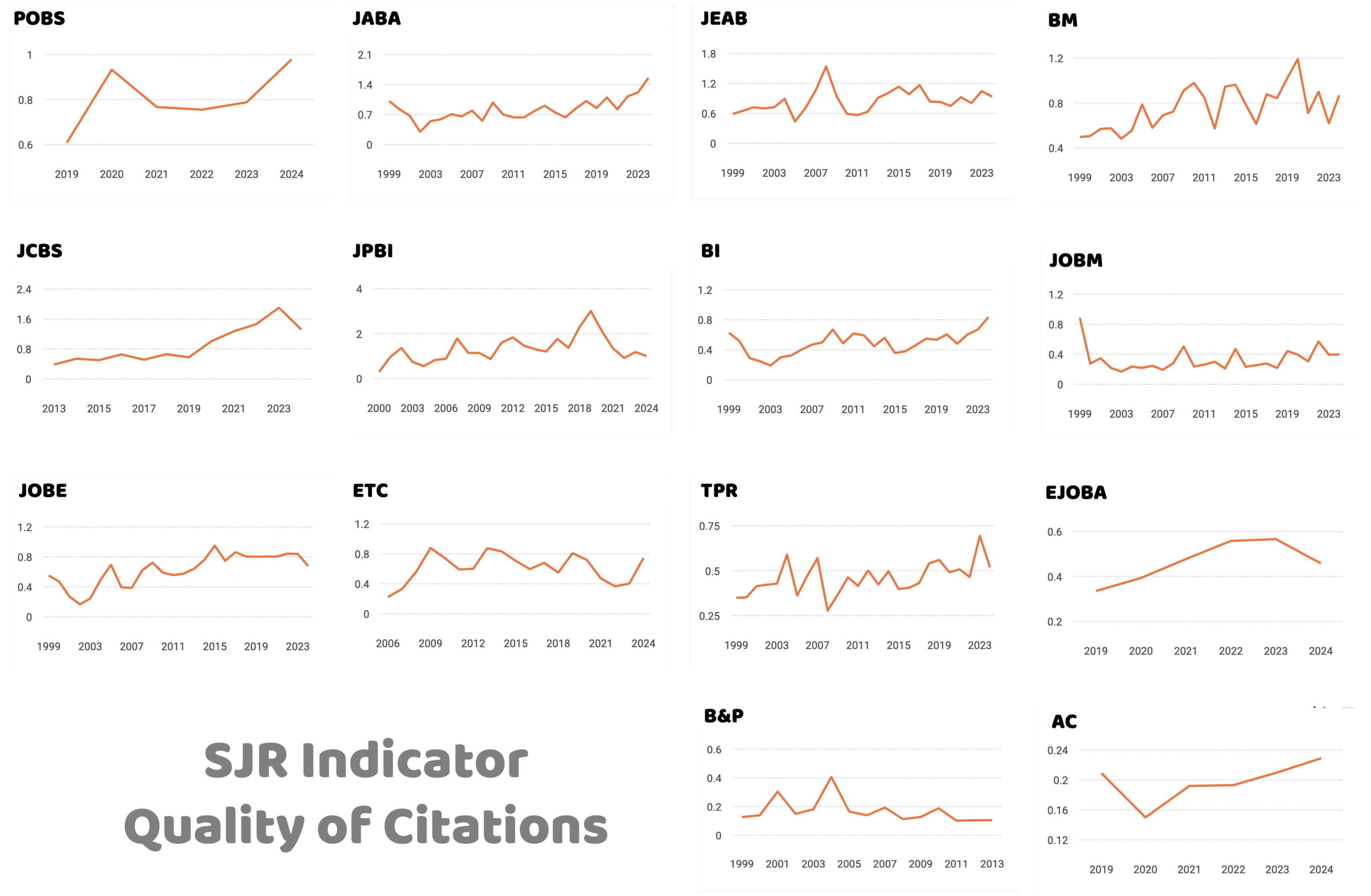The SJR (for SCImago Journal Rank) Indicator conveys a combination of how often a journal is cited and where. The Indicator, according to its designers:
…Is a size-independent prestige indicator that ranks journals by their ‘average prestige per article’. It is based on the idea that ‘all citations are not created equal’. SJR is a measure of scientific influence of journals that accounts for both the number of citations received by a journal and the importance or prestige of the journals where such citations come from It measures the scientific influence of the average article in a journal, it expresses how central to the global scientific discussion an average article of the journal is.
[It] represents the average number of weighted citations received in the selected year by documents published in the chosen journal during the previous three years. For example, it counts the weighted citations received in year X for documents published in the journal in years X-1, X-2, and X-3.
Click here to download a more detailed description of the Indicator. To illustrate its function, consider the following hypotheticals.
- Journal A has a decent IF, except that most of its citations come from little-noticed journals. Journal B has the same IF, but it is cited by more influential journals. Journal B would have a higher SJR Indicator.
- In Journal A, a fairly obscure journal, authors tend to cite one another frequently. This yields a decent-looking IF, even though few people outside of the journal’s core authors notice Journal A. Such a journal would have a low SJR Indicator.
Below are SJR Indicator trends for behavior analysis journals. For this ordinal measure, higher is better. See the Postscript for a key to journal title abbreviations.
The journals shown below are the only behavior analysis journals indexed in the SCImago Journal & Country Rank data base. Journal-ranking services do not attempt to track all of the tens of thousands of scientific journals that exist (with more appearing daily). Instead, they make judgements about which ones really matter. The SCImago site does not specify its criteria for choosing journals to track.
Notes:
- Axis scaling is not consistent across journals, so you have to compare carefully.
- I’m not sure, but POBS data may not take into account the predecessor title The Behavior Analyst.

Postscript: Key to Journal Abbreviations
| ABBREVIATION | JOURNAL TITLE |
|---|---|
| POBS | Perspectives on Behavior Science |
| JABA | Journal of Applied Behavior Analysis |
| JEAB | Journal of the Experimental Analysis of Behavior |
| JCBS | Journal of Contextual Behavioral Science |
| JPBI | Journal of Positive Behavior Interventions |
| BI | Behavioral Interventions |
| BM | Behavior Modification |
| JOBE | Journal of Behavioral Education |
| ETC | Education and Treatment of Children |
| TPR | The Psychological Record |
| JOBM | Journal of Organizational Behavior Management |
| EJOBA | European Journal of Behavior Analysis |
| AC | Acta Comportamentalia: Revista Latina de Análisis del Comportamiento |
| B&P | Behavior & Philosophy |
